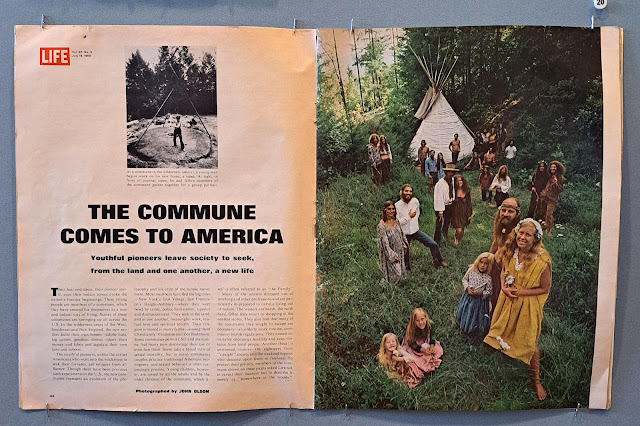by Patricia Frischer
 |
| Pastizal Zamudio |
Michael Krichman, executive
director of INSITE, was kind enough to pull me into the latest workings of his
organization. Andrea Torreblanca’s essay about how she met Pastizal
Zamudio and commissioned him to do a work intrigued me. Pastizal Zamudio
(a nomadic artist with seemingly many
names) grew up in the building yard of what was part of an amazing experiment
in Mexicali. His fantasy archeological dig into his memories has produced a
number of objects on display at the new exhibition at Bread and Salt, The
Mexicali Experience Project.
To better understand the exhibition, a time line might be
helpful.
1903: Mexicali was founded as a
sister city to Calexico to take advantage of natural resources
Mid-1960’s: US companies set up maquiladores or manufacturing center
1975: the Mexicali experiment started to offer affordable housing to
workers. Architect Christopher Alexander was invited to lecture, but stayed to
help build a housing project
1976: Only five of the homes were built before the times changed and
track homes came into vogue. Peter Bosselmann's drawing were created to assist workers.
1977: A Pattern Language
was written by Alexander, not an instruction manual, but a philosophy of
life; A set of design elements and rules for their use much like a word language is used to write paragraphs.
1984: Dorit Fromm and Peter Bosselman, both students of Alexander
revisited the site which was closed off.
early 1990: Mario Vargus was allowed by the University of Baja Norte to
live in the site for 10 years with his family and Pastizal Zumudio.
2006: The complex was re-opened as a health center and University Center
for the Community
2022: Zamudio was commissioned by INSITE
2024: Hooper was commissioned by INSITE
Pastizal Zamudio’s work, Before the Last Rubble, inthe Face of Dawn (2038), explores the builders’ yard which was really more
of an experimental place where the eventually owners and students tried to
craft and assemble and test some of Alexander’s ideas. The builders were the
owners and so one of Alexander big new concepts was to let them influence how
they would be living in the spaces. The yard was conceived to eventually become
a community center for the complex.
When Zamudio returned to the site for this project, after
his father’s death, the room that was his parent’s bedroom was a
hospital ward. Zamudio’s project concentrated on the central courtyard where
he removed the cement and replaced it with more than one hundred clay stones
molded with their bare hands.
Peter Bosselmann returned to Mexicali seven years later
after the five houses were completed. He said, “It might make some architects
uncomfortable that their work is being changed... When it was first finished,
the housing there didn’t have the same quality of integration that it has now.
Now it has reached a level of ordinariness that is better integrated into life
and makes me very happy. This is the quality that is my real goal.”
The whole exhibition takes you through a history of this
period. It has examples of the symbols used in A Pattern Language. It creates a
mood of the 1960, hippie movement and Habitat for Humanities which we remember
vividly. It has never before displayed story board like drawings by Peter Bosselman, an installation by Pastizal
Zamudio, and a selection of drawing of what you can see if you were to visit
the site of the Mexicali Experiment today by Cynthia Hooper. There are also original
photographic archives by Howard Davis, Dorit Fromm, Peter Bosselmann, and the
Christopher Alexander Center for Environmental Structure Archive.
 |
| Christopher Alexander, A Pattern Language |
 |
| Christopher Alexander |
 |
| Peter C. Bosselmann |
 |
| Peter C. Bosselmann, detail |
 |
| Pastizal Zamudio |
 |
| Pastizal Zamudio |
Pastizal Zamudio
 |
| Cynthia Hooper |
 |
| Cynthia Hooper |
 |
| Cynthia Hooper |
 |
| Cynthia Hooper |
The Mexicali ExperienceProject at Bread
and Salt
Curated by Andrea Torreblanca in collaboration with Felipe Orensanz
INSITE Commonplaces The
Sedimentary Effect A Timeless Way of Building Exhibition
Nov 9, 2024 to Feb 15, 2025
Tuesday - Saturday: 11am - 4pm
1955 Julian Ave, San Diego, CA
Please note: This exhibition is also part of World Design Capitol SD/TJ














No comments:
Post a Comment